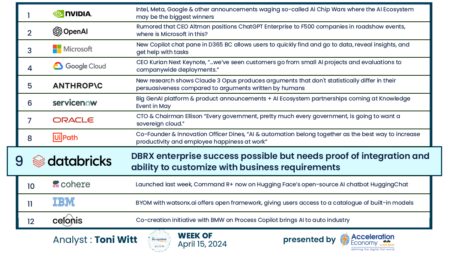Scaling up a manufacturing business happens at several different levels. You can put emphasis on increasing sales, but you must keep up with manufacturing what you sell. To increase manufacturing volume, you can build new plants or add manufacturing lines, but that is very expensive and takes time.
The best way to increase business scale at the lowest cost—doing more with less—is to optimize the manufacturing process. This allows you to produce more volume without heavy investment in physical buildings and equipment. Recent innovations in cloud and data technology play a critical role in enabling process optimization. And that is where CIOs have a prime opportunity to help scale up manufacturing companies. Following are some of the ways they can do that.
What Key Improvements Can Help Optimize the Manufacturing Process?
- Decrease downtime. Every minute that a machine is offline means lost productivity and profitability. Using analytics and data to anticipate failure and intervene before breakage happens can greatly reduce downtime. For a non-manufacturing example, think of sensors in your car that tell you how many miles you can drive before you run out of gas. Stopping to fill up requires much less downtime than running out of gas somewhere on the highway. Similarly, if manufacturing systems can either alert an operator of necessary maintenance or, even better, perform maintenance automatically, then systems can be kept running continuously for longer times, saving a great deal of money and increasing output. According to research by McKinsey & Company (Manufacturing: Analytics unleashes productivity and profitability), “predictive maintenance typically reduces machine downtime by 30 to 50 percent and increases machine life by 20 to 40 percent.”
- Maximize efficiency. The complexity of manufacturing processes makes it possible for problems and inefficiencies to slow down overall production rates. Hidden bottlenecks and unprofitable production lines can easily be overlooked. Optimization of production by analyzing data produced in the manufacturing process can bring to light many opportunities for improvement. McKinsey reports that “Even small percentage improvements in operational efficiency can significantly enhance [profits].”
- Quality control. It’s very important to maintain high levels of quality in the manufacturing process, and to identify and correct quality issues as quickly as possible. A common method of quality control is to perform periodic quality checks. While this approach may keep quality problems from getting out of hand, there could still be considerable loss of productivity and waste caused by any quality issues that occur up until the time of the quality check. Also, depending on the frequency of the checks, some quality issues might go unnoticed if they occur intermittently between checks. A better approach is to have continuous quality assessment using sensors on the production line, either alerting an operator of potential quality issues, or even making live corrections, resulting in no loss or waste at all.
What Technologies Play a Key Part in Enabling These Improvements?
- Cloud. Modern cloud-based systems allow the integration of OT (operations technology) such as manufacturing lines and the array of sensors collecting production data, and IT (information technology) like ERP systems or analytics. The cloud makes it possible for information workers in a corporate office to have access to data produced in the manufacturing plants, analyze that data, and make business decisions that ultimately result in increased profits.
- AI/ML. Those business decisions can often be enhanced by passing the manufacturing and supply chain data through artificial intelligence and machine learning models that can find problems and offer solutions in areas such as demand forecasting, predictive maintenance, and quality improvements.
- Edge computing. Manufacturing facilities are often located in remote areas with limited access to redundant Internet connections. While a downtown office building might have options for ensuring that a network connection to the cloud is always available, this isn’t always feasible for plants and warehouses. If there is only one Internet provider available, and that provider suffers an outage, the systems that are relying on cloud connectivity could become inoperable, which could mean shutting down production or shipping. Furthermore, manufacturing lines have sensors that have the potential to produce millions of data points very quickly. To push all this data directly to the cloud for processing requires high bandwidth connections to the Internet, whereas if the server is located on-site, the data only passes over the local network. There have been many exciting advances in edge computing, which entail performing some of the data collection and processing close to the source of the data, such as the factory, shop floor, or warehouse. With edge computing, operations should be able to carry on in the event of an Internet disruption and data could be analyzed locally, rather than pushed through limited bandwidth.
Industry Clouds for Manufacturing
An emerging category of industry-specific applications and services from cloud service providers package up these technologies and others for businesses in a variety of industries, including manufacturing. For example, at Acceleration Economy’s Industry Cloud Battleground, Google Cloud, Microsoft, Oracle, Salesforce, and SAP all described a new generation of services that can help manufacturing companies with things such as IoT, plant management, and predictive anomaly detection. For more, see “Industry 4.0 and Building for the Future.”
As outlined in this article, there are many ways that CIOs and IT teams can help manufacturing companies scale that do not involve investment in new physical plant. These digital technologies have an important role to play even when the end result is a manufactured product.








